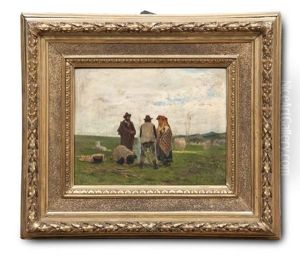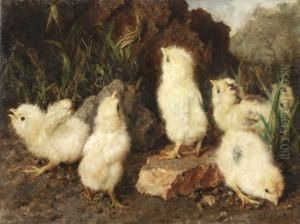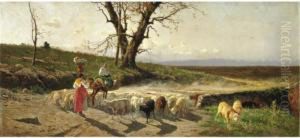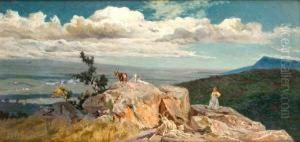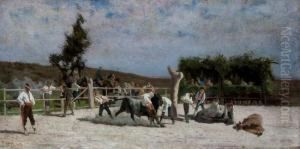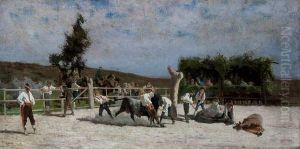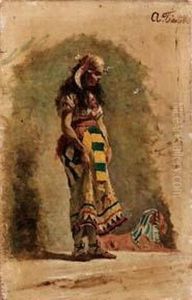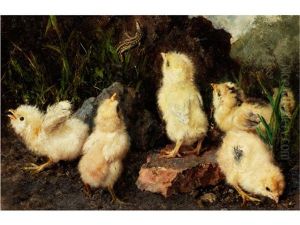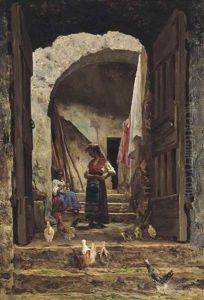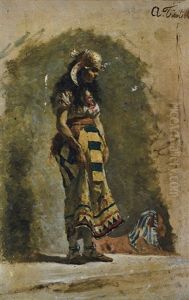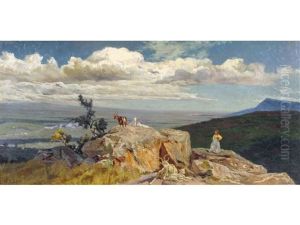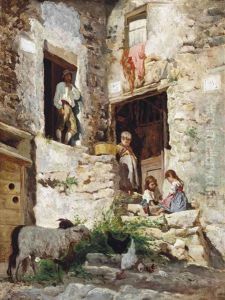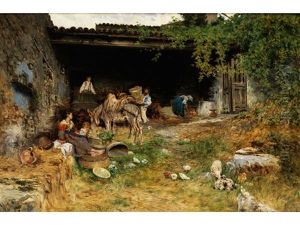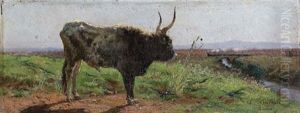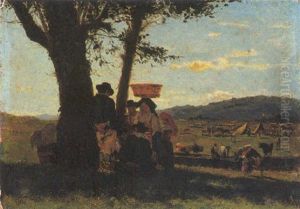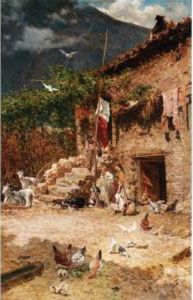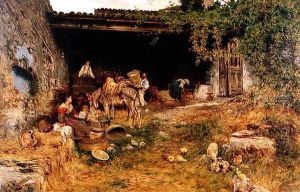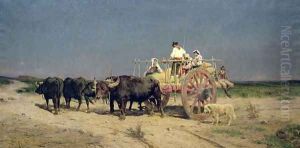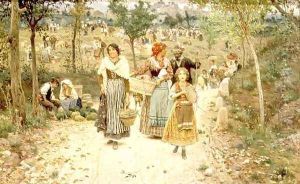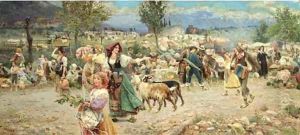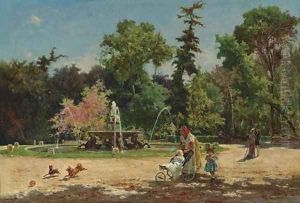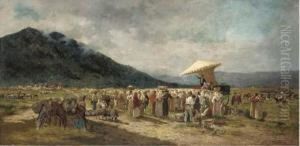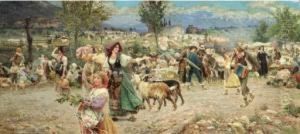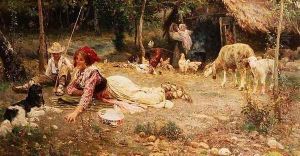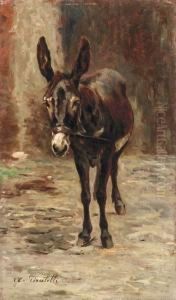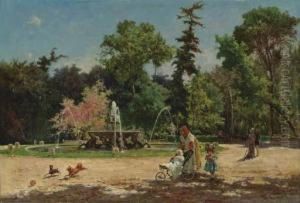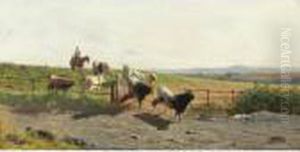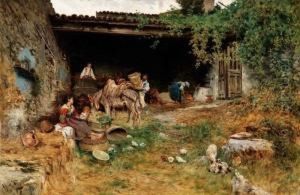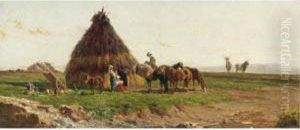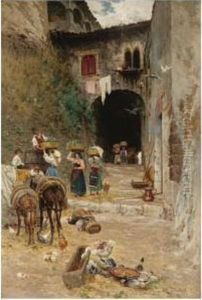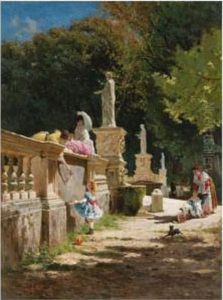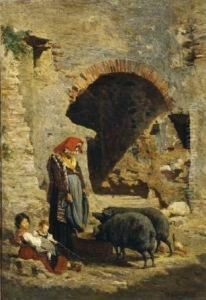Aurelio Tiratelli Paintings
Aurelio Tiratelli was an Italian painter and etcher born on August 24, 1842, in Rome. His artistic journey began in his native city where he was influenced by the Italian tradition of landscape painting. He initially trained under his father, Pompeo Tiratelli, who was also a painter and engraver, before attending the Accademia di San Luca, an institution dedicated to the arts and the promotion of artists.
Tiratelli's work is characterized by his dedication to the Roman Campagna, the traditional countryside around Rome, which he depicted in many of his landscape paintings. His approach to art was traditional, focusing on capturing the natural beauty and the classical heritage of the Italian landscape. He was part of the group of artists known as the 'Intransigents' or 'Intransigentisti', who opposed the modernization of art and remained faithful to the classical and academic styles.
Throughout his career, Tiratelli also explored etching, producing fine prints that showcased his skill in this medium. His works often reflected a romantic sensibility, infused with a sense of nostalgia for the past glories of Rome and the surrounding countryside.
Tiratelli was active during a period of significant change in Italy, including the Risorgimento, the movement for Italian unification, which influenced many artists of the time. Despite the prevailing winds of change, he remained committed to his artistic principles and continued to exhibit his works at various venues, including the prestigious Venice Biennale.
Aurelio Tiratelli died on February 13, 1919, leaving behind a legacy of artworks that celebrate the Italian landscape and its historical significance. His paintings and etchings remain a testament to the enduring appeal of traditional landscape art and provide insight into the cultural milieu of 19th-century Italy.
